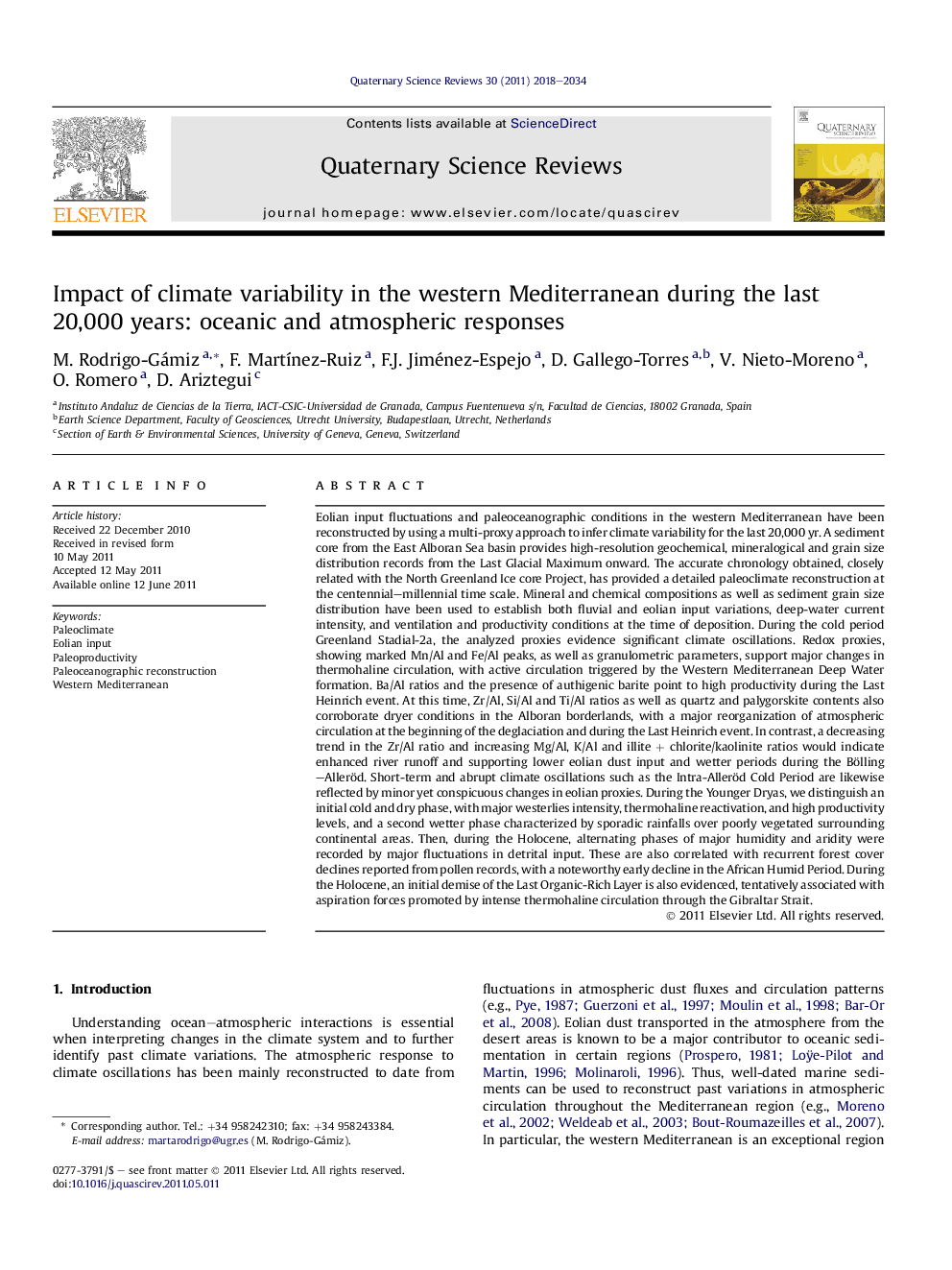| کد مقاله | کد نشریه | سال انتشار | مقاله انگلیسی | نسخه تمام متن |
|---|---|---|---|---|
| 4736811 | 1640910 | 2011 | 17 صفحه PDF | دانلود رایگان |

Eolian input fluctuations and paleoceanographic conditions in the western Mediterranean have been reconstructed by using a multi-proxy approach to infer climate variability for the last 20,000 yr. A sediment core from the East Alboran Sea basin provides high-resolution geochemical, mineralogical and grain size distribution records from the Last Glacial Maximum onward. The accurate chronology obtained, closely related with the North Greenland Ice core Project, has provided a detailed paleoclimate reconstruction at the centennial–millennial time scale. Mineral and chemical compositions as well as sediment grain size distribution have been used to establish both fluvial and eolian input variations, deep-water current intensity, and ventilation and productivity conditions at the time of deposition. During the cold period Greenland Stadial-2a, the analyzed proxies evidence significant climate oscillations. Redox proxies, showing marked Mn/Al and Fe/Al peaks, as well as granulometric parameters, support major changes in thermohaline circulation, with active circulation triggered by the Western Mediterranean Deep Water formation. Ba/Al ratios and the presence of authigenic barite point to high productivity during the Last Heinrich event. At this time, Zr/Al, Si/Al and Ti/Al ratios as well as quartz and palygorskite contents also corroborate dryer conditions in the Alboran borderlands, with a major reorganization of atmospheric circulation at the beginning of the deglaciation and during the Last Heinrich event. In contrast, a decreasing trend in the Zr/Al ratio and increasing Mg/Al, K/Al and illite + chlorite/kaolinite ratios would indicate enhanced river runoff and supporting lower eolian dust input and wetter periods during the Bölling–Alleröd. Short-term and abrupt climate oscillations such as the Intra-Alleröd Cold Period are likewise reflected by minor yet conspicuous changes in eolian proxies. During the Younger Dryas, we distinguish an initial cold and dry phase, with major westerlies intensity, thermohaline reactivation, and high productivity levels, and a second wetter phase characterized by sporadic rainfalls over poorly vegetated surrounding continental areas. Then, during the Holocene, alternating phases of major humidity and aridity were recorded by major fluctuations in detrital input. These are also correlated with recurrent forest cover declines reported from pollen records, with a noteworthy early decline in the African Humid Period. During the Holocene, an initial demise of the Last Organic-Rich Layer is also evidenced, tentatively associated with aspiration forces promoted by intense thermohaline circulation through the Gibraltar Strait.
► Record from a basin with high sedimentation rates, providing ultra-high-resolution.
► Data from a region is especially sensitive to past climate oscillations.
► This study represents a detailed high-resolution multi-proxy approach.
► Provides new insights on the atmospheric/oceanographic response to climate change.
► The last 20 kyr is a key period to further understand present and future climate.
Journal: Quaternary Science Reviews - Volume 30, Issues 15–16, July 2011, Pages 2018–2034